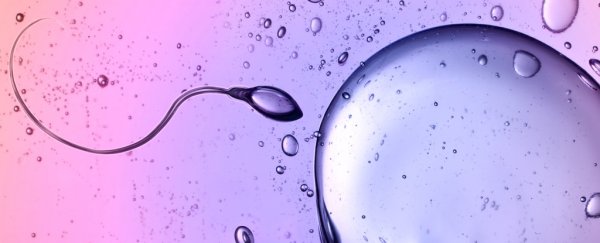After decades of looking, researchers have identified a molecule that plays an important role in guiding sperm to find eggs.
The discovery, observed in the cellular biology of sea urchins, isn't just of importance for marine invertebrates – as the findings may reveal new secrets about human fertility that could help us to treat male infertility.
"The union of ovum and spermatozoon is not a process in which the sperm penetrates by virtue of its mechanical properties, but one in which a peculiarly intimate and specific biochemical reaction plays the chief role," zoologist F.R. Lillie from the University of Chicago's Marine Biological Laboratory (MBL) wrote over 100 years ago.
Now, more than a century later, cellular biologist U. Benjamin Kaupp from the Centre of Advanced European Studies in Germany – who for almost two decades has studied marine reproduction at Lillie's former institution – looks to have identified how this "intimate and specific" reaction is actually possible.
When Lillie discussed the biochemical phenomenon in 1912, he was one of the first scientists to report on what's called sperm chemotaxis – the notion that sperm cells are guided to an egg by the release of a chemical stimulus from the oocyte.
In the case of sea urchins, the chemoattractant was discovered decades later to be a peptide called resact, which diffuses in the water once released by the egg, forming a concentration gradient.
Sperm released into the water by neighbouring male sea urchins can sense this gradient and swim towards ever higher concentrations of the chemical to reach the oocyte of their heart's desire.
In other words, this must be underwater love, and it doesn't take an awful lot of resact to get things going.
In previous research, Kaupp and fellow researchers discovered that a single molecule of the chemoattractant among billions of water molecules is all that's needed for urchin sperm to sit up and take notice.
But even so, one of the true wonders of life's existence is that such infinitesimal sperm cells are able to figure out how to steer themselves to their fertilisation target.
"They use information in the chemical gradient to make calculations about the direction in which they're swimming," Kaupp explained in 2015.
"They can count molecules over a certain time, integrate all these together, and then respond by changing their swimming path."
Now, thanks to new research, we know how those on-the-fly calculations are possible.
Before now, it was known that changes in intracellular pH were an important factor in sperm signalling, but the mechanisms behind this process weren't fully clear.
When resact and sea urchin sperm come into contact, a molecule of the chemoattractant binds to a receptor on the sperm's flagellum (tail), triggering a series of signalling events in which calcium ions enter the sperm cell.
When this happens, the calcium reactions manipulate the beating of the flagellum, effectively steering the sperm's tail like a rudder of the ship, and directing the cell towards the higher chemoattractant gradient (and, eventually, the egg to be fertilised).
What Kaupp and his team have identified in their new paper is the molecule that allows this calcium interchange to take place: SpSLC9C1, which the researchers describe as a kind of "phylogenetic chimaera" that has a unique way of enabling sodium ions to flow into the sperm cell while protons are moved out.
In SpSLC9C1, this functioning regulates the level of alkalinity inside the sperm cell, which in turn controls flagella activity – and is ultimately the reason you see so many sea urchins around these days.
It's not clear yet to what extent these processes are related to the functioning of sperm in humans and other mammals, but Kaupp says everything we learn in sea urchins helps expand our knowledge of reproductive biology overall.
"There are many reasons why fertilisation might fail," Kaupp says.
"There can be defects in swimming, in recognising the chemoattractant, in recognising the surface of the egg, or in penetrating the protective layer over the top of the egg. If we know how sperm function, then we can look specifically for mutations in our genes that cause infertility."
The findings are reported in Nature Communications.
